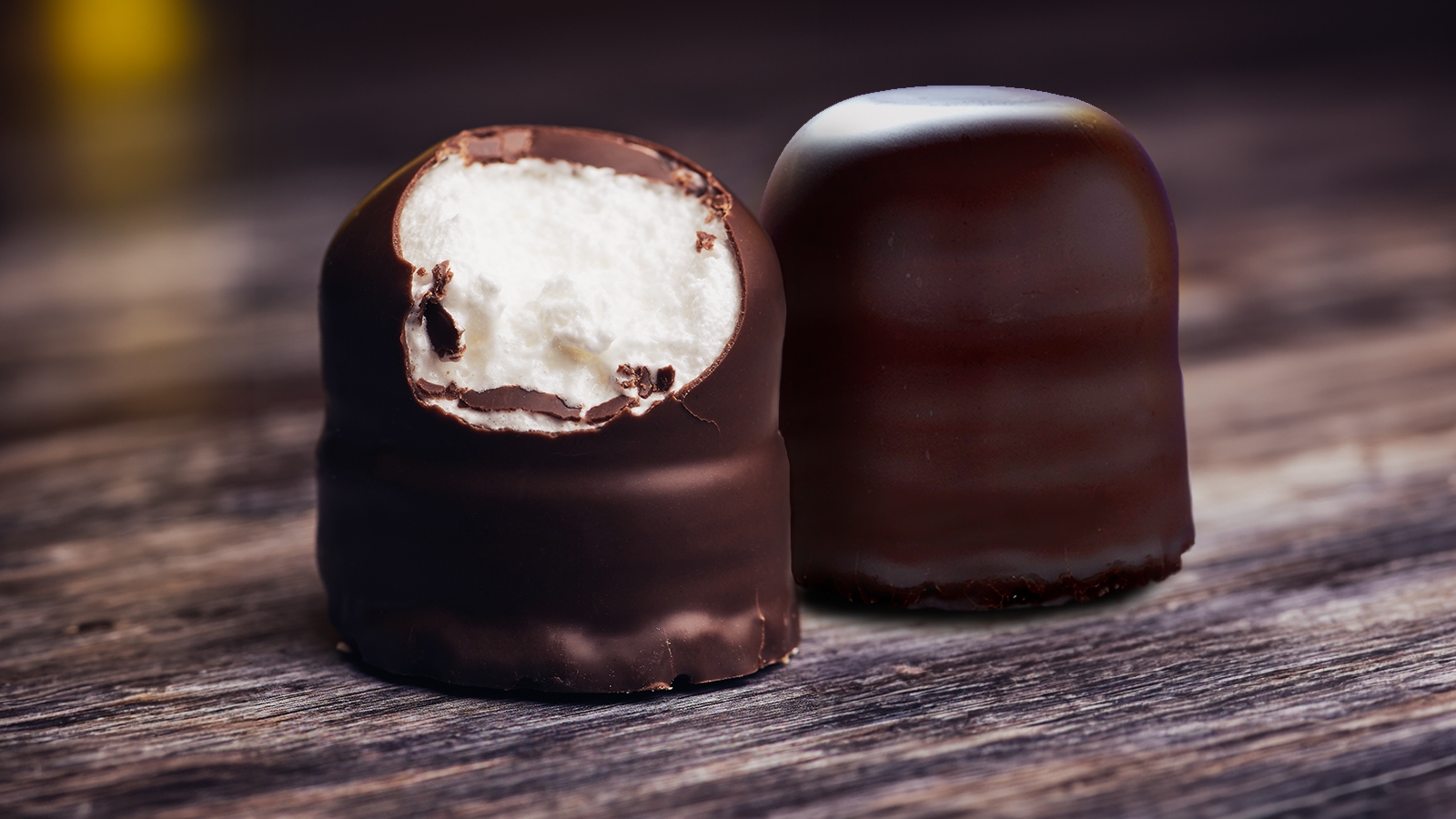Krembos — chocolate-coated domes of whipped marshmallow on a biscuit base — are Israel’s favorite confection. Fifty million of them (that’s nine per person) are eaten each year — a hell of a lot for a tooth-achingly sweet treat with a dairy-free chocolate-ish coating (30% choc, 70% God knows what).
So what is the secret to the krembo’s success? After all, there are similar products all over the world without its cult status: Mallomars (U.S.), Tunnock’s teacake (U.K.), Sweetie pie (South Africa), Mohrenkopf (Germany), Whippet (Canada), Flødeboller (Denmark), to name a few.
After a deep — and I mean deep — internet dive, I can conclude that it’s three-fold: The krembo has an extensive history, it’s deeply nostalgic and it’s seasonal. Let’s get into it.
Extensive History
Most people agree that the treat originated in Denmark a couple of centuries ago, and was popular throughout Northern Europe. It was European Ashkenazi Jews escaping persecution who brought the predecessor of krembo to pre-state Israel. This early version was always homemade and inherited an outrageously racist name from its Danish ancestor. Thankfully, it was changed by the first Israeli manufacturer — the Whitman Company, who were later acquired by Strauss — in the 1960s. They renamed the confection krembo (or crembo), krem meaning “cream,” bo meaning “in it.”
The Nosher celebrates the traditions and recipes that have brought Jews together for centuries. Donate today to keep The Nosher's stories and recipes accessible to all.
Others claim that the treat was developed by the owners of an ice cream factory who sought a product for the winter, when customers weren’t so interested in ice cream.
Whatever the origin, Israelis aren’t keen to deviate from the original vanilla krembo, though they will flirt with the elusive mocha, introduced by Whitman in 1967. Since then, many copycat manufacturers have tried to tempt consumers with flavors like strawberry, banana or colorful coatings — to no avail. Which brings me to…
Deep Nostalgia
Krembos are not only nostalgic on a personal level, recalling childhood birthday parties and after-school treats eaten on grandparents’ knees, but a collective one. By now, three generations of Israelis have feasted on this treat, which has remained unchanged bar the removal of its aluminum wrapper in 2018.
Fittingly, in the Hebrew translation of ‘Harry Potter,’ headmaster Dumbledore’s favorite sweet is not a sherbet lemon, but a krembo. “The equivalent children’s dessert in Israel is the krembo. If I’d translated it as a lemon sucking candy, it wouldn’t have imparted the same image of Dumbledore,” explained the translator Gili Bar-Hillel to World Jewish Digest.
Like any cult confection, people have strong opinions about how best to eat it. According to Strauss — Israel’s leading krembo producer — 69% of Israelis eat krembos from top to bottom, while only 10% start with the biscuit (a fickle 11% are open to persuasion). And though there’s yet to be an official study, Israelis are also divided on the correct temperature of a krembo. Some firm them up in the freezer, while others heat them in the microwave (sans, one would hope, the aluminum wrapper) for an extra-gooey interior. An odd choice given that…
Seasonality
Krembos are only available in cold-weather months (from October to February) because they are prone to melting in the summer heat. Logistics aside, krembo’s limited availability creates an annual buzz, as Israelis eagerly anticipate “Krembo Season,” which often leads to shortages, resulting in nationwide outrage.

Craving a krembo? These chocolate-pistachio krembos will hit the spot.



